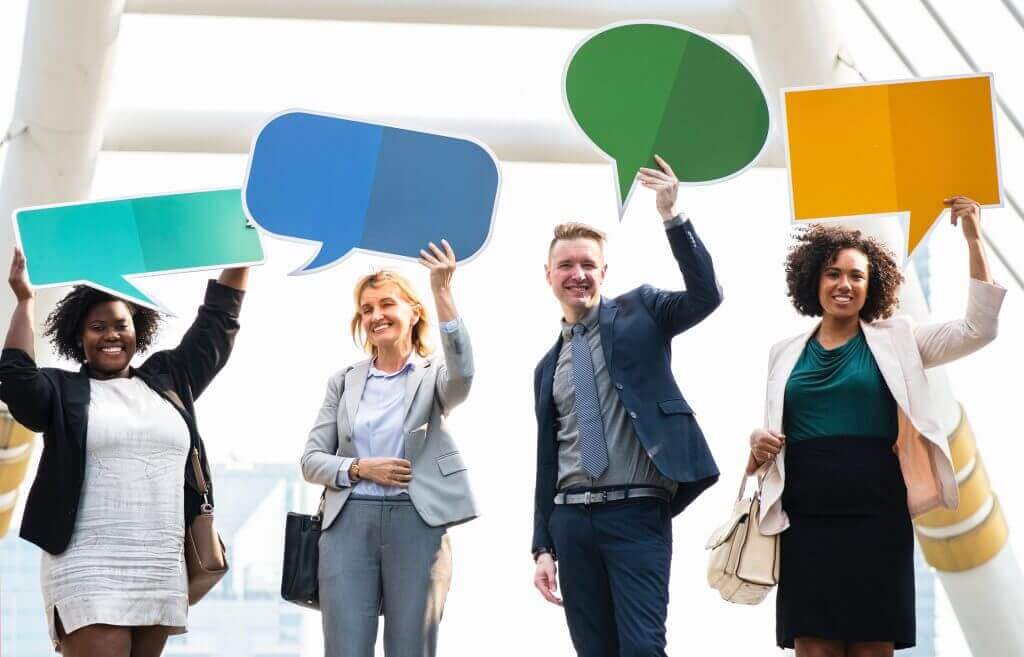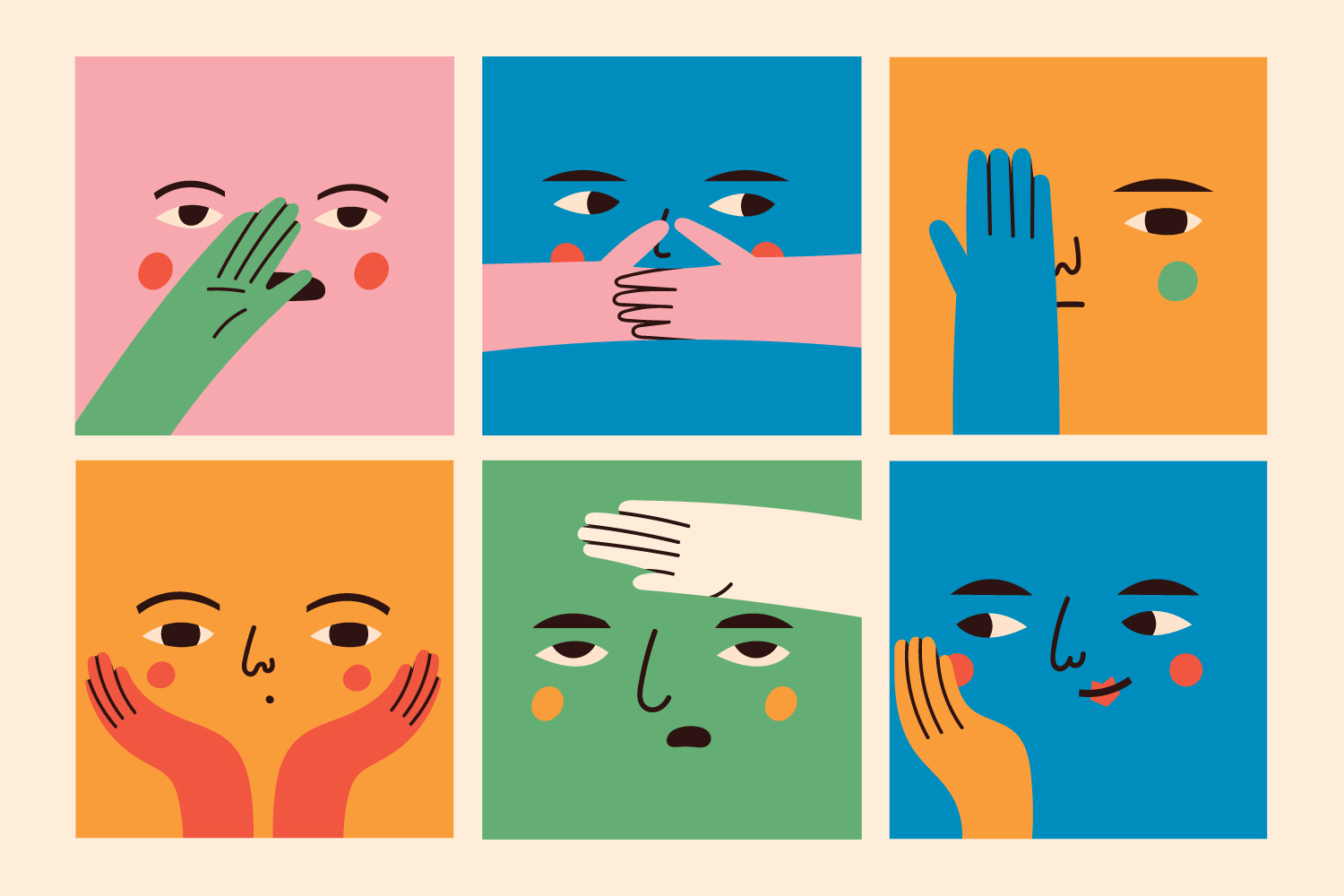Key Takeaways
- Nonverbal communication includes facial expressions, gestures, and body language, which are crucial for conveying emotions and intentions.
- Effective nonverbal communication can enhance clarity and understanding in professional settings, making interactions more meaningful.
- Gestures and facial expressions are universal, but their meanings can vary across different cultures, highlighting the importance of cultural awareness.
- Improving nonverbal skills involves being mindful of your body language and understanding the impact of your nonverbal cues on others.
- Mastering nonverbal communication can lead to stronger professional relationships and improved conflict resolution skills.

“Effective Communication Skills …” from agilevelocity.com and used with no modifications.
The Power of Nonverbal Communication in Professional Settings
Nonverbal communication is more powerful than you might think. In professional settings, it can convey messages even before you utter a single word. Imagine walking into a meeting room. Your posture, the firmness of your handshake, and even the way you make eye contact can set the tone for the entire interaction. This is why understanding and mastering nonverbal communication is essential.
Nonverbal cues often speak louder than words. They can express confidence, authority, and trustworthiness, or, conversely, insecurity and indifference. Most importantly, they bridge the gap between spoken words and the emotions behind them, creating a more complete picture of the communicator’s intent.
- Facial expressions can instantly reveal emotions.
- Gestures add emphasis and clarity to verbal communication.
- Body language can indicate openness or defensiveness.
- Eye contact helps establish connection and trust.
Defining Nonverbal Communication
Nonverbal communication encompasses all the ways we convey information without words. It’s the silent language that speaks volumes about our feelings, attitudes, and intentions. From the subtle twitch of an eyebrow to the deliberate wave of a hand, nonverbal signals are constantly at play in our interactions.
It’s important to remember that nonverbal communication isn’t just about what you do, but also how you do it. The speed of your gestures, the intensity of your facial expressions, and the rhythm of your movements all contribute to the message you’re sending.
Role and Impact in Workplace Interactions
In the workplace, nonverbal communication can make or break your interactions. It plays a pivotal role in building rapport, resolving conflicts, and fostering collaboration. When you are aware of your nonverbal cues and those of others, you can navigate professional relationships with greater ease and effectiveness.
Consider a scenario where a manager is giving feedback to an employee. If the manager maintains open body language, makes appropriate eye contact, and uses a calm tone of voice, the employee is more likely to feel respected and valued. This approach not only enhances understanding but also encourages a positive response from the employee.
Therefore, mastering nonverbal communication can lead to a more harmonious work environment, where ideas are exchanged freely and respectfully.
Understanding Different Types of Nonverbal Communication
Nonverbal communication is diverse and multifaceted. It includes various elements that work together to convey meaning. Understanding these elements can help you become a more effective communicator.
Facial Expressions as a Communication Tool
Facial expressions are universal indicators of emotion. A smile can convey friendliness, while a furrowed brow might indicate concern or confusion. In professional settings, maintaining a neutral or positive facial expression can help create a welcoming atmosphere and encourage open dialogue.
It’s crucial to be aware of your facial expressions, as they can sometimes betray your true feelings, even when you’re trying to remain composed. Practicing control over your expressions can help you manage how others perceive you.
The Role of Gestures in Conveying Messages
Gestures are a powerful tool for emphasizing and clarifying verbal messages. They can add energy and dynamism to your communication, making your points more memorable. However, gestures can also vary in meaning across cultures, so it’s essential to be mindful of the context in which you’re using them.
For example, in some cultures, nodding signifies agreement, while in others, it might simply indicate that the person is listening. Being aware of these cultural differences can prevent misunderstandings and ensure that your message is received as intended.
When used effectively, gestures can enhance your communication, making it more engaging and impactful.

“How Eye-to-Eye Contact Guides Our …” from www.technologynetworks.com and used with no modifications.
Significance of Eye Contact
Eye contact is a powerful form of nonverbal communication that can convey confidence, attentiveness, and sincerity. In many cultures, maintaining appropriate eye contact is seen as a sign of respect and engagement. When you look someone in the eye during a conversation, you create a connection that can make your message more impactful.
However, it’s important to strike a balance. Too much eye contact can be perceived as intimidating, while too little might suggest disinterest or evasiveness. In professional settings, aim to maintain eye contact for about 50-70% of the conversation to convey confidence and interest without making the other person uncomfortable.
Practical Examples in Everyday Professional Life
Nonverbal communication is all around us in the workplace. Understanding how to use it effectively can enhance your professional interactions and help you achieve your goals. Here are some practical examples of how nonverbal communication plays out in everyday professional life.
Nonverbal Communication in Meetings
Meetings are a common setting where nonverbal communication plays a crucial role. Your body language, facial expressions, and gestures can all contribute to the effectiveness of the meeting. For example, sitting up straight and leaning slightly forward can show that you’re engaged and interested in the discussion.
Additionally, nodding along as others speak can indicate that you’re actively listening and processing the information. This can encourage others to share their ideas more freely, fostering a collaborative environment.
Effective Nonverbal Cues During Presentations
Presentations are another area where nonverbal communication is key. Your posture, movements, and gestures can all enhance or detract from your message. To make your presentation more engaging, consider the following tips:
- Use open gestures to emphasize key points and invite audience engagement.
- Make eye contact with different members of the audience to create a sense of connection.
- Move around the space to keep the audience’s attention and add energy to your presentation.
By being mindful of your nonverbal cues, you can make your presentations more compelling and memorable.
Most importantly, practice makes perfect. Rehearsing your presentation in front of a mirror or recording yourself can help you become more aware of your nonverbal communication and make adjustments as needed.
Subtle Signals in Interviews and Evaluations
Interviews and evaluations are high-stakes situations where nonverbal communication can significantly impact the outcome. During an interview, for instance, maintaining good posture, offering a firm handshake, and making appropriate eye contact can convey confidence and professionalism. Understanding these traits and behaviors can help in presenting oneself effectively.
In evaluations, being aware of your body language can help you communicate openness to feedback and a willingness to improve. Nodding, maintaining eye contact, and keeping your arms uncrossed can signal that you’re receptive to the evaluator’s comments. For more insights on effective communication, consider exploring egocentric behavior and its impact on interpersonal interactions.
The Importance of Nonverbal Communication
Nonverbal communication is essential because it complements and enhances verbal communication. It helps convey emotions, clarify messages, and build rapport. Understanding its importance can help you become a more effective communicator.
Strengthening Professional Relationships
Nonverbal communication is a powerful tool for building and strengthening professional relationships. It can convey empathy, trust, and understanding, which are crucial for creating a positive work environment.
For example, a simple smile or nod can go a long way in making colleagues feel appreciated and valued. These small gestures can create a sense of camaraderie and foster a more collaborative atmosphere.
Substituting and Reinforcing Spoken Words
- Nonverbal cues can substitute for verbal messages when words are not enough.
- They can reinforce spoken words by adding emphasis and clarity.
- They can contradict verbal messages, revealing true feelings or intentions.
By understanding how nonverbal communication works, you can use it to reinforce your spoken words and ensure that your message is received as intended.
Besides that, being mindful of your nonverbal cues can help you avoid sending mixed messages and ensure that your communication is clear and consistent.
Enhancing Clarity and Understanding
Nonverbal communication enhances clarity and understanding by providing additional context to verbal messages. It can help clarify ambiguous statements and ensure that your message is understood correctly.
For example, a thumbs-up gesture can indicate approval or agreement, providing a clear signal of your intentions. Similarly, a questioning look can prompt further clarification, ensuring that misunderstandings are addressed promptly.

“effective nonverbal communication …” from www.writermag.com and used with no modifications.
Enhancing Your Nonverbal Communication Skills
Improving your nonverbal communication skills can enhance your interactions and make you a more effective communicator. Here are some tips to help you get started:
Improving Body Language Awareness
Body language is a silent yet powerful form of communication. By becoming more aware of your own body language, you can better control the messages you send. Start by observing yourself in a mirror or recording your interactions to identify any habits or gestures that might be sending unintended signals. Are you slouching? Crossing your arms too often? These could be perceived as signs of disinterest or defensiveness.
Once you’ve identified areas for improvement, practice adopting more open and positive body language. Stand tall, keep your arms relaxed by your sides, and maintain a comfortable stance. These small changes can make a big difference in how others perceive you.
Techniques to Master Eye Contact
Eye contact is a fundamental aspect of nonverbal communication. It conveys confidence and interest, but mastering it requires practice. Start by making a conscious effort to maintain eye contact during conversations. Aim for about 50-70% of the time to avoid making the other person uncomfortable. For more on enhancing focus, explore these centering techniques.
Practice with a friend or family member, focusing on holding their gaze naturally. If you find it challenging, try looking at the bridge of their nose instead. This can give the impression of eye contact without feeling too intense.
Effective Use of Gestures and Facial Expressions
Gestures and facial expressions add depth and emotion to your communication. They can emphasize your points and make your message more engaging. However, it’s important to use them appropriately and in moderation. Overusing gestures can be distracting, while underusing them can make your communication seem flat. Learn how to recognize and handle condescending behavior to improve your communication skills.
To improve your use of gestures, practice speaking in front of a mirror or record yourself. Pay attention to how you use your hands and facial expressions. Are they reinforcing your message or detracting from it? Adjust accordingly to ensure they align with your words.
Facial expressions should be genuine and match the tone of your message. A smile can convey warmth and friendliness, while a serious expression can emphasize the importance of your words. Be mindful of your expressions to ensure they accurately reflect your intentions. Understanding how to recognize and handle condescending behavior can also help in maintaining the sincerity of your expressions.
Adapting Nonverbal Skills Across Cultures
Nonverbal communication can vary significantly across cultures. What is considered polite or appropriate in one culture might be perceived differently in another. Therefore, it’s essential to adapt your nonverbal skills when interacting with people from diverse backgrounds.
Start by researching the cultural norms of the people you will be communicating with. Learn about their customs regarding eye contact, personal space, and gestures. This knowledge will help you avoid misunderstandings and show respect for their cultural practices.
When in doubt, observe the nonverbal cues of others and adjust your behavior accordingly. Being adaptable and open-minded will help you navigate cross-cultural interactions more effectively.
Besides that, seek feedback from colleagues or friends who are familiar with the culture. They can provide valuable insights and help you refine your nonverbal communication skills.
- Research cultural norms before interacting with people from different backgrounds.
- Observe and adapt to the nonverbal cues of others.
- Seek feedback from those familiar with the culture to refine your skills.
Frequently Asked Questions (FAQ)
Nonverbal communication can be complex, and you may have questions about how to apply it effectively in your interactions. Here are some common questions and their answers to help you better understand this essential skill.
What Are the Most Common Types of Nonverbal Communication?
The most common types of nonverbal communication include facial expressions, gestures, body language, eye contact, and paralinguistics. Each type plays a unique role in conveying emotions and intentions without the use of words.
For example, facial expressions can instantly reveal how someone is feeling, while gestures can emphasize or clarify verbal messages. Understanding these different types can help you become a more effective communicator.
How Can Nonverbal Cues Impact a Professional Setting?
Nonverbal cues can significantly impact a professional setting by influencing how messages are perceived. They can convey confidence, authority, and trustworthiness, or, conversely, insecurity and indifference. For instance, maintaining good posture and eye contact during a meeting can demonstrate engagement and professionalism.
Additionally, being aware of your nonverbal cues can help you build rapport with colleagues, resolve conflicts, and foster collaboration. By mastering nonverbal communication, you can create a more positive and productive work environment.
Why Is Eye Contact So Important in Communication?
Eye contact is crucial in communication because it helps establish connection and trust. It shows that you are attentive and engaged, which can make your message more impactful. In many cultures, maintaining appropriate eye contact is seen as a sign of respect and sincerity. For more on how our brain processes such interactions, explore these key brain regions involved in communication.
However, it’s important to strike a balance. Too much eye contact can be perceived as aggressive, while too little might suggest disinterest. Practicing and finding the right level of eye contact can enhance your communication skills.
How Can I Improve My Nonverbal Communication Skills?
Improving your nonverbal communication skills involves becoming more aware of your body language, facial expressions, and gestures. Practice in front of a mirror or record yourself to identify areas for improvement. Focus on adopting open and positive body language, maintaining appropriate eye contact, and using gestures effectively.
What Role Does Nonverbal Communication Play in Conflict Resolution?
Nonverbal communication plays a vital role in conflict resolution by helping convey empathy, understanding, and openness. During conflicts, maintaining calm and open body language can demonstrate a willingness to listen and collaborate on finding a solution.
Additionally, being mindful of your nonverbal cues can help you avoid escalating the conflict and ensure that your message is received as intended. By mastering nonverbal communication, you can navigate conflicts more effectively and foster a more harmonious environment.
Nonverbal communication is a critical aspect of our daily interactions. It encompasses various forms, including facial expressions, gestures, posture, and eye contact. Understanding these cues can significantly enhance interpersonal relationships and improve communication effectiveness. For instance, maintaining eye contact can convey confidence and attentiveness, while a smile can indicate friendliness and approachability. Recognizing these nonverbal signals can also help in identifying underlying emotions or intentions that may not be explicitly stated. Moreover, being aware of one’s own nonverbal behavior can prevent misunderstandings and foster a more positive interaction. To delve deeper into enhancing communication skills, explore how to handle condescending behavior effectively, which can be a barrier to effective communication.










Leave a Reply